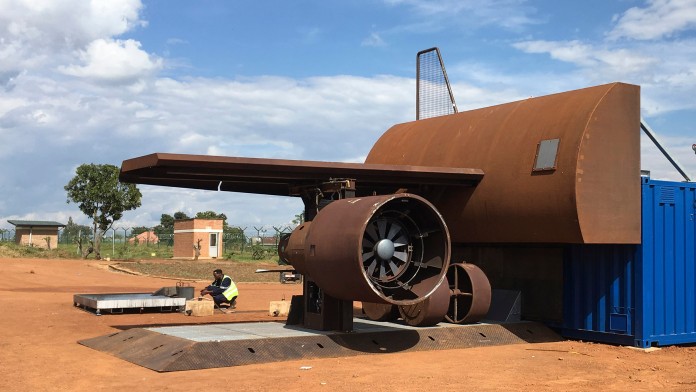News from 2017-09-14 / DEG
Airport fire department in Rwanda trains under real-life conditions

On 1 September 2017, a real-life fire simulation system of the Lübeck-based company Dräger, an international leader in the fields of medical and safety technology, was put into operation at Kigali International Airport, Rwanda. DEG provides 50 per cent of the investment volume using funds from the German Federal Ministry for Economic Cooperation and Development’s (BMZ) develoPPP.de programme. The total investment volume amounts to EUR 1 million.
Meeting international aviation standards with well-trained firefighters
“The objective is to provide training and further training for firefighters, thereby passing on expertise directly into the region,” explains Dr. Asmus Figge, Project Manager at Dräger. From a development perspective, it is significant that the Rwanda Civil Aviation Authority will meet the high standards of the International Civil Aviation Organization (ICAO) in future. “The Rwanda Civil Aviation Authority will create new jobs and generate revenues in the long term,” expects Ricarda Horst, Senior Investment Manager at DEG.
New jobs will be created in the long term
Kigali International Airport will thus become the centre for training and further training for aircraft rescue and firefighters (fire personnel and first aiders) in East Africa. Up to 300 firefighters from airports in neighbouring countries will complete their so- called heat training in the fire simulation system every year. The training facility measures 3.9m by 8.6m by 6m, and is modelled on a plane, thereby allowing training under almost real-life conditions. Initially Strategic Fire Solutions GbR from Dresden will conduct the training sessions on the fire simulation system. Dräger itself will teach five trainers, who, in future, will be in charge of the training.
Kigali International Airport has developed into an important international airport over the last few years. This is, on the one hand, due to the economic upturn, and on the other hand to the growing tourism in the region.

Share page
To share the content of this page with your network, click on one of the icons below.
Note on data protection: When you share content, your personal data is transferred to the selected network.
Data protection
Alternatively, you can also copy the short link: https://www.deginvest.de/s/endBZF67.Bp3A
Copy link Link copied